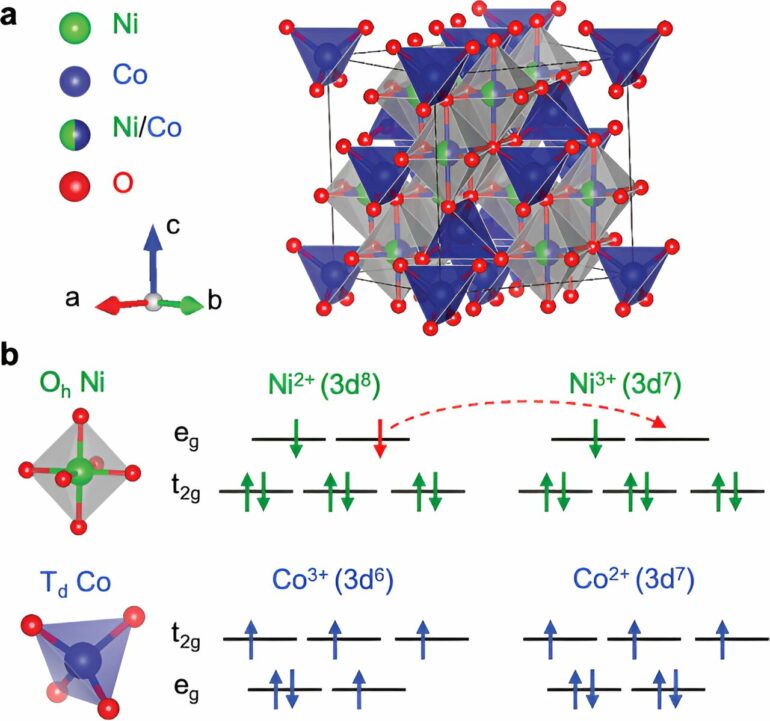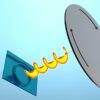In a paper published recently in Advanced Science, researchers from the Paul Drude Institute in Berlin, Germany, and the Xiamen University, Xiamen, China, demonstrated that ferrimagnetic NiCo2O4 (NCO) constitutes a solution for the long-term challenge of finding materials with a robust out-of-plane magnetization.
Furthermore, they have shown that the electrical and magnetic characteristics of NCO can be tailored in wide ranges. The research team also resolved the origin of an unusual fundamental magnetotransport phenomenon. These findings pave the way for novel spintronic application, offering solutions for future high-density memories beyond current designs.
With the objective of developing novel magnetic oxides for future spintronics and understanding their fundamental properties, Lv. et al. demonstrated that NiCo2O4 stands out as a promising spintronic material due to its robust out-of-plane magnetization and flexible tunability. As a consequence, the utilization of NCO paves the way for novel ferrimagnetic spintronic concepts and next-generation high-density memories beyond the recently reported concepts based on antiferromagnetic materials.
The identification of magnetic materials with a robust perpendicular (out-of-plane) magnetic anisotropy (PMA) is crucial for today’s spintronics since superlattice structures with ultrathin individual layers are usually utilized to realize PMA in high-density memories. Materials with a robust PMA in relatively thick films are much less challenging for device fabrication and, thus, more cost-effective.
The study of Lv. et al. reveals that besides the PMA, the entire transport and magnetic properties of NCO films can be tailored in large ranges depending on the relative concentrations of Ni cations in different valence states (Ni2+ vs. Ni3+). In fact, the material characteristics of NCO films are found to crucially depend on the electrical conductivity which can be adjusted between insulating and metallic behavior.
From the fundamental point of view, Lv. et al. reveal the origin of the unusual sign reversal in the anomalous Hall effect (AHE) as the consequence of a competition between different underlying mechanisms. In fact, the authors demonstrate that the sign of the AHE can be feasibly tuned in NCO films independent of their thicknesses which has never been reported for other single-phase materials.
The study also revealed for the first time a contribution of skew-scattering in a low-conductivity material (~ 102 Ω-1cm-1). Previously, such a contribution to the AHE has been reported only for super-clean metals with high-conductivities (~ 106 Ω-1cm-1). In this context, NCO films constitute a new platform to investigate and manipulate the quantum transport in magnetic materials.
Based on both, the additional knowledge on magnetotransport phenomena as well as the tunable magnetic properties, ferromagnetic NCO holds great promise for subsequent research. This work is, therefore, of broad interest for fundamental research, the design of novel spintronic applications as well as the industrial development of high-density memories.
More information:
Hua Lv et al, Underlying Mechanisms and Tunability of the Anomalous Hall Effect in NiCo2O4 Films with Robust Perpendicular Magnetic Anisotropy, Advanced Science (2023). DOI: 10.1002/advs.202302956
Provided by
Paul-Drude-Institut für Festkörperelektronik
Citation:
Researchers demonstrate solution for long-term challenge, bringing benefits to spintronics and data storage technologies (2023, October 30)



